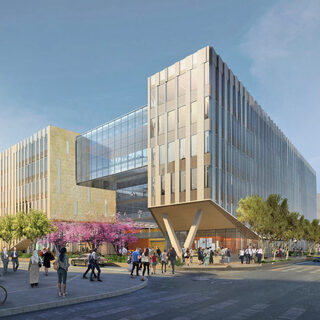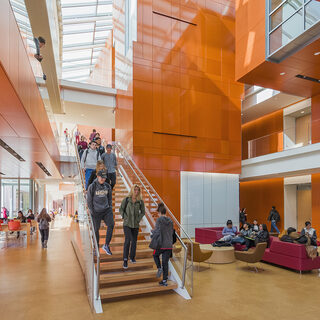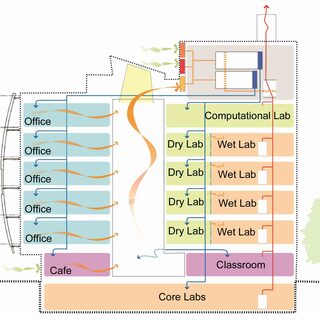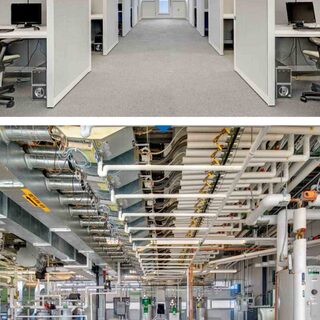Tradeline's industry reports are a must-read resource for those involved in facilities planning and management. Reports include management case studies, current and in-depth project profiles, and editorials on the latest facilities management issues.
Latest Reports
Sentient Building Technology Drives Space Utilization, Interaction, and Flexibility in Higher Education, Healthcare, and Research
Combining wireless sensor networks with custom mobile apps to create interactive “sentient buildings” and smart community spaces has the potential to significantly impact the future of facility design in higher education, healthcare, research, and other sectors where increased collaboration and space efficiency are crucial.
Nexus Building
The Nexus Building is home to Adelphi University’s College of Nursing and Public Health and the Center for Health Innovation, and serves as a hub for core student services. It is also a welcoming space for prospective families who visit Adelphi’s admissions office, and alumni who access the advancement office.
Top 10 Most-Read Tradeline Reports of 2016
- Major Trends in Research Facility Planning and Design
- NIH Receives a $2 Billion Funding Boost
- The Next-Next Generation Workplace
- Intel Designs Next Generation Workplace for Recruitment and Retention
- Transforming Existing Spaces into Active Learning Classrooms
- Future Proofing Vivarium Space Through Flexible Design
- University of Texas MD Anderson Cancer Center’s New Space Allocation System
- “Super Lab” Improves Student Learning, Challenges Faculty Adaptability
- Maker Spaces: The Bridge Between Higher Education and Industry
- UPenn Replaces the HVAC System of a Fully Occupied, Operational Chemistry Facility
Integrated Facilities for Engineering and Life Sciences Pose New Challenges
An increase in funding streams for interdisciplinary research coupled with major advances in computational research are driving bioengineering and integrated life sciences and engineering program growth. “Increasingly, universities are engaging in interdisciplinary research—that’s where the exciting problems are, and that’s what funding agencies are funding,” says Dr. Stephen Director, provost emeritus of Northeastern University in Boston. “We have found that our existing facilities don’t easily support that.”
Improved Workplace Ventilation Shown in Studies to Double Cognitive Function Scores
Because it’s expensive to heat and cool outdoor air drawn into a building, workspaces tend to be ventilated only enough to meet ASHRAE minimums or achieve a LEED credit. But air quality profoundly affects workers’ cognitive performance, and even modest increases in ventilation can yield productivity and health benefits that far exceed the cost, says Joseph Allen, assistant professor and director of the Healthy Buildings Program at the Center for Health and the Global Environment at Harvard T.H. Chan School of Public Health.





